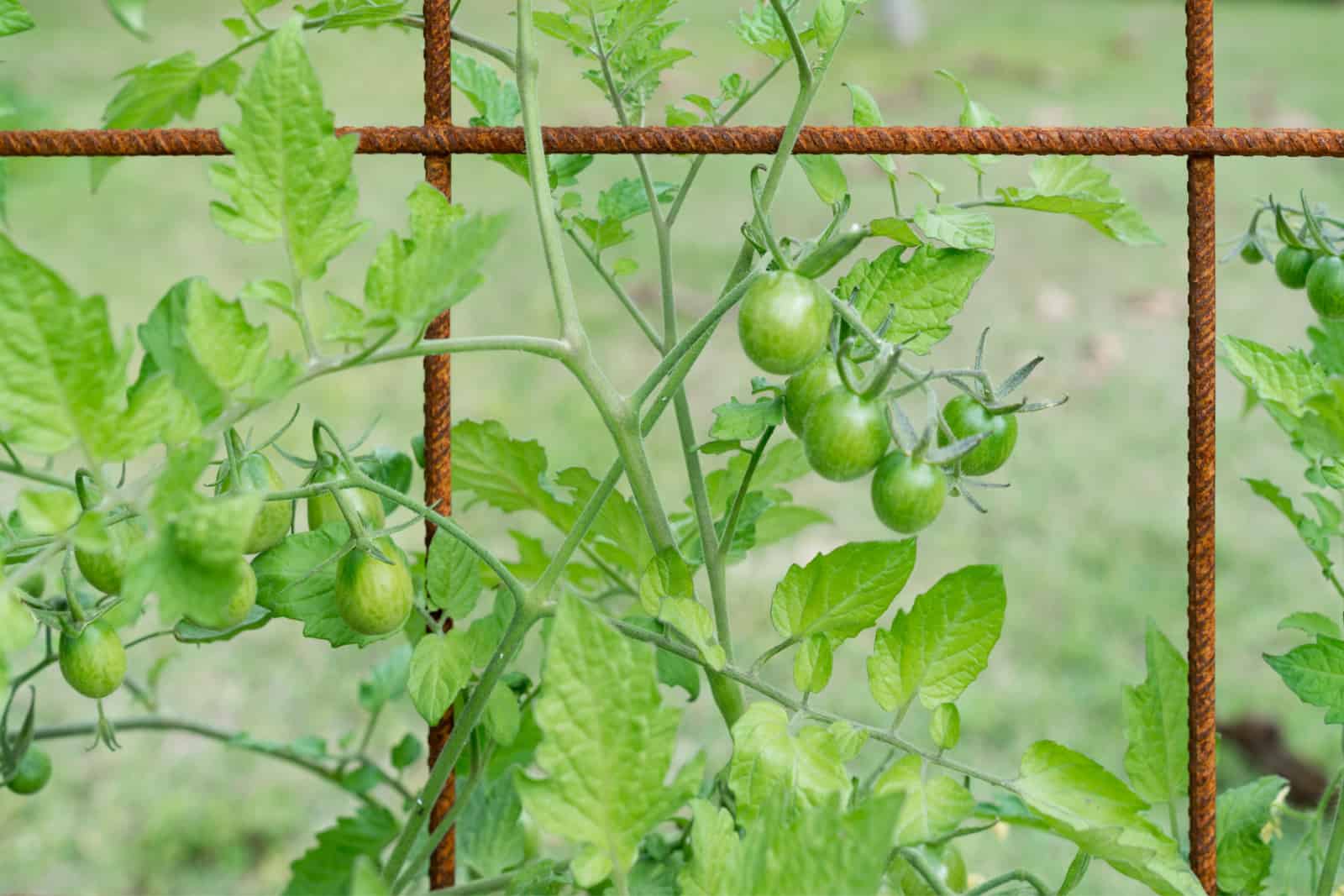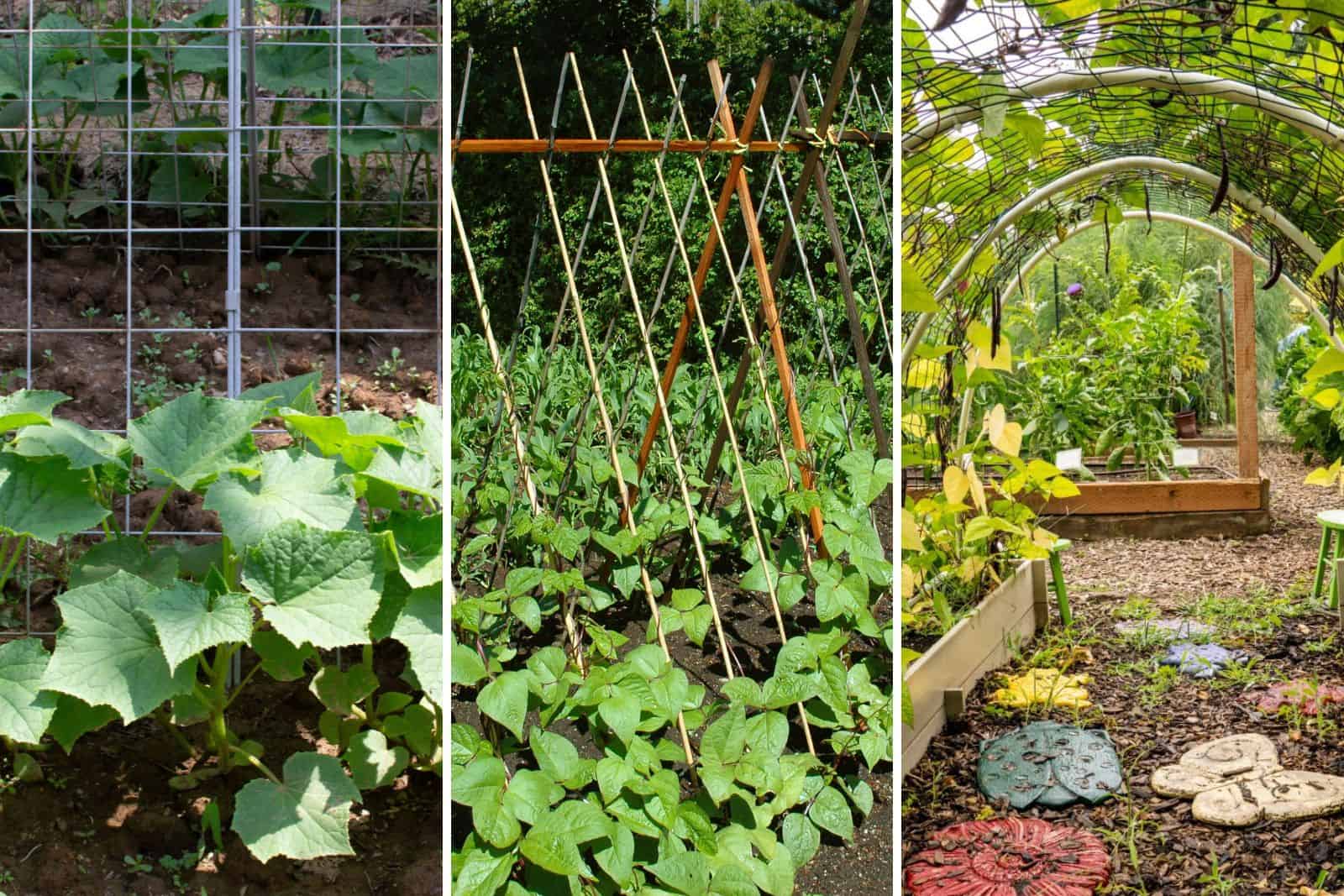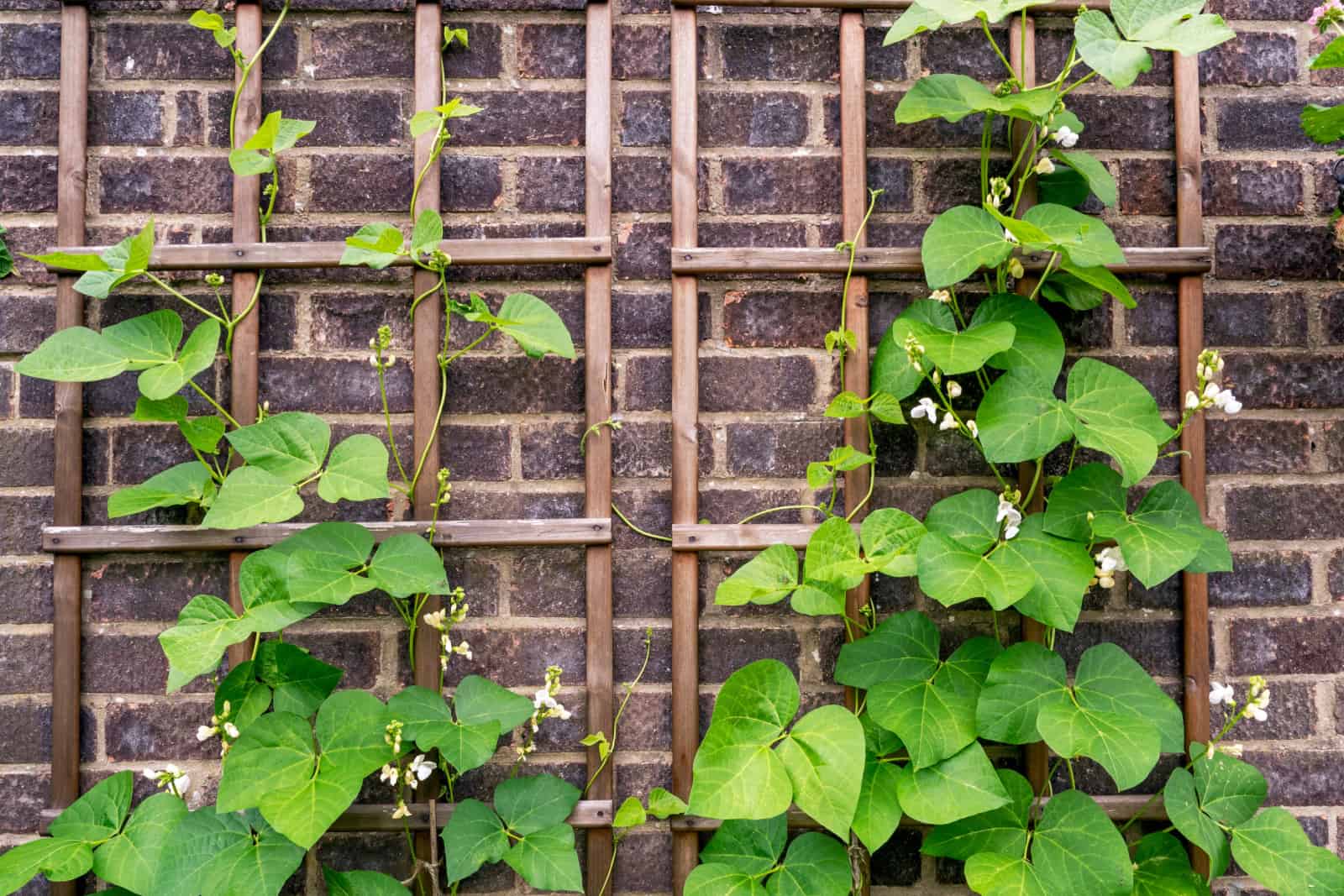I’m constantly looking for new ways to improve my garden and find more space for my numerous projects, so when ground space became scarce, I decided to climb instead!
Trellising has changed the way everyone looks at my garden because it creates more visual interest and also benefits plants. It gives them more airflow, protects them from heat fatigue, and provides shade for ground-growing species that need it.
It’s also given me lots of room to grow different veggies, not to mention making harvest day a piece of cake!
So if this is something you want to try out, here are my top tips!
Which Plants To Grow On Trellises
When we picture a trellis, we think of pole beans, tomatoes, cucumbers, honeysuckle, columbine, and roses climbing up these structures.
But there are so many plants in your garden you probably don’t think of as climbers, including pumpkins, zucchini, and melons.
Pumpkins
Growing pumpkins on a trellis is incredibly easy. Once you see how the setup catches the eye and delights everyone with its lantern-like appearance, you won’t be able to resist the idea.
They hang charmingly overhead, with all their unique shapes and autumnal colors on display.
But it’s not just about the looks! Trellising makes flowers more accessible to bees and other pollinators, ensuring you get an abundant harvest.
And since one side of the fruit isn’t constantly pressed against the ground, you’ll get more rounded veggies.
This method is also practical as it keeps the dense foliage off the ground. This way your plant will have more air circulation and less risk of fungal diseases. It’ll be easier to harvest and you’ll use all that wasted air space.
You can do this with any type of squash; pumpkins, zucchini, summer or winter squash, loofah, gourds, etc.
Tomatoes
Another veg we love seeing on trellises are tomatoes, especially the indeterminate varieties. These plants love climbing, and staking them actually takes some of the stress off the stems.
As well as looking terrific in this setting, particularly if you use an arched trellis, this method has some practical applications.
It keeps vines off the ground, allowing for better airflow and reducing the risk of fungal infections.
Trellising will also keep the tomato fruit hanging, so you won’t be disappointed to see your fruit half rotten on the ground or eaten by wildlife.
This also makes it much easier to harvest sweetest tomato varieties because you don’t have to bend your back as much.
Cucamelons
Cucamelons are cucurbits just like cucumbers. And while you can absolutely grow cucumbers on trellises, I wanted to devote this section to their lesser-known cousins.
These veggies look like tiny watermelons but taste like a mildly sour cucumber. They’re amazing when pickled, if their fresh sour taste isn’t something you can handle.
Cucamelons look great once trained on an arched trellis, and can add so much to your landscape.
This technique will also keep them thriving as they won’t drag their vines on the ground, resulting in more airflow and less fungal diseases.
Flowers
Veggies aren’t the only plants you can grow on trellises. Climbing roses, clematis, jasmine, hydrangea, and wisteria flowers are just a few of the flowers you can grow this way.
This method will save you space and make your garden more beautiful than ever.
How To Make A Trellis
There are three basic types of trellis: straight (vertical), A-frame, and arched.
These aren’t hard to come by – you can find them in virtually any nursery or hardware store. However, those trellises aren’t high quality, and are usually just two pieces of wood stuck together.
Their sizes also aren’t that diverse, so they probably won’t fit your needs.
Luckily you can easily make your own straight trellis with lumber and some rebar mesh. If you’re building it for a raised bed, measure the size of your bed so that you can build it the right size and screw it afterwards.
Then all you need to do is connect two planks with a shorter third one. You can adjust these sizes based on your needs, but generally taller planks can be 2x2x8 and the shorter ones about 42 inches long.
Screw the frame together and staple the mesh onto it. You can also use twine instead of mesh, but in this case you’ll have to use small nails all over the frame so that you can fasten the twine to it.
Here are some more tips for building a vertical trellis:
Garden arches are another amazing type of trellis, but they can get quite expensive if you want to buy ready made ones.
Fortunately you can also make them yourself, and all you need are cattle panels and something stable to hold them.
You can use garden steel stakes, but if you don’t like the way they look, garden bed wood is also appropriate and will give your trellis a more natural appearance.
Now all that’s left is to arch the cattle panel and fasten it to the stake. If you need a larger trellis, simply use two panels and wire them so that they overlap about 4 feet at the top.
Just like this:
If you like the A-frame trellis more, simply bend the cattle panel in half.
You can also use natural materials for a more organic (and economic) look. Dead branches, twine, and vines can create all the support your plants need.
Hard lines achieved with mesh, lumber, and stakes can give more structure to a wild garden, while freeform trellises can give some character to a formal setting.
Structure Your Garden
One thing you need to bear in mind when incorporating a trellis into your yard is its placement. This aspect can make or break the overall visual appeal, as well as the function of your garden.
If you want a trellis for your veggies, you shouldn’t stick it in the middle of your garden bed. That position will make it hard to reach due to other plants growing in the ground, and the beans or tomatoes on it will only taunt you.
Instead place the trellis at the edge of your vegetable garden and make sure that it doesn’t block sunshine. Be sure to keep your other plant in the shade.
You can also use trellises strategically and place them somewhere to cover up an ugly wall or similar structure.
These rising stakes can change the microclimate of your yard, and you can use that to your advantage. They’ll reduce the temperatures a bit and keep a certain portion of your garden in the shade. That’s where you can plant species which appreciate these conditions.
Trellises are also wildlife-friendly, giving bees and birds a landing spot and some cover to the other beneficial organisms.
And as for you, you’ll have something amazing to look upon everytime you go out to check your veggies.
I hope you found this article helpful!
Until next time!



